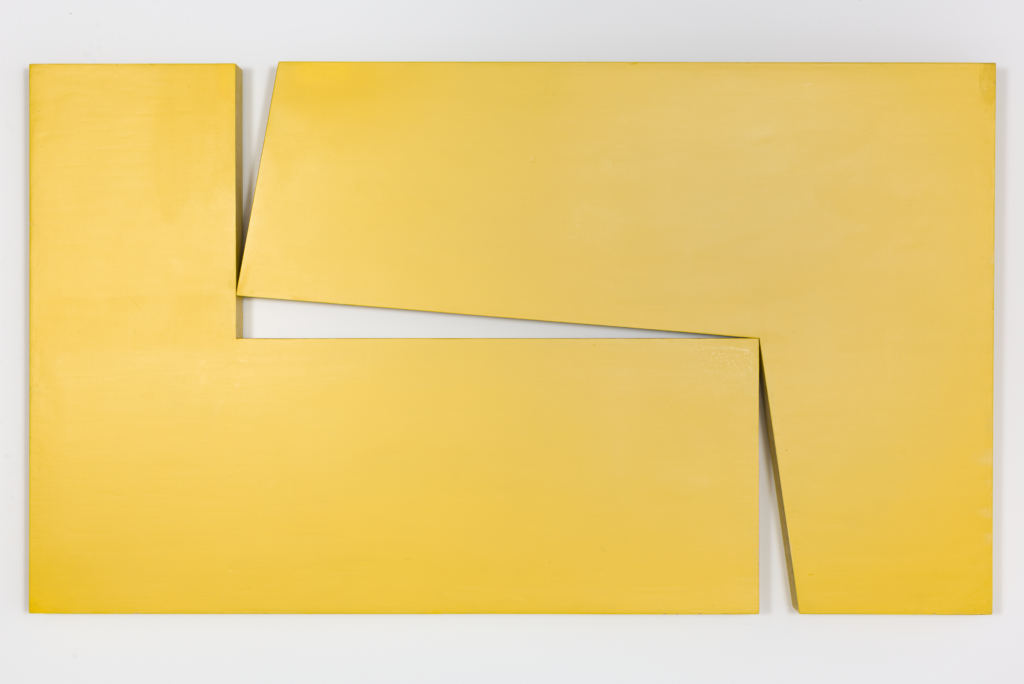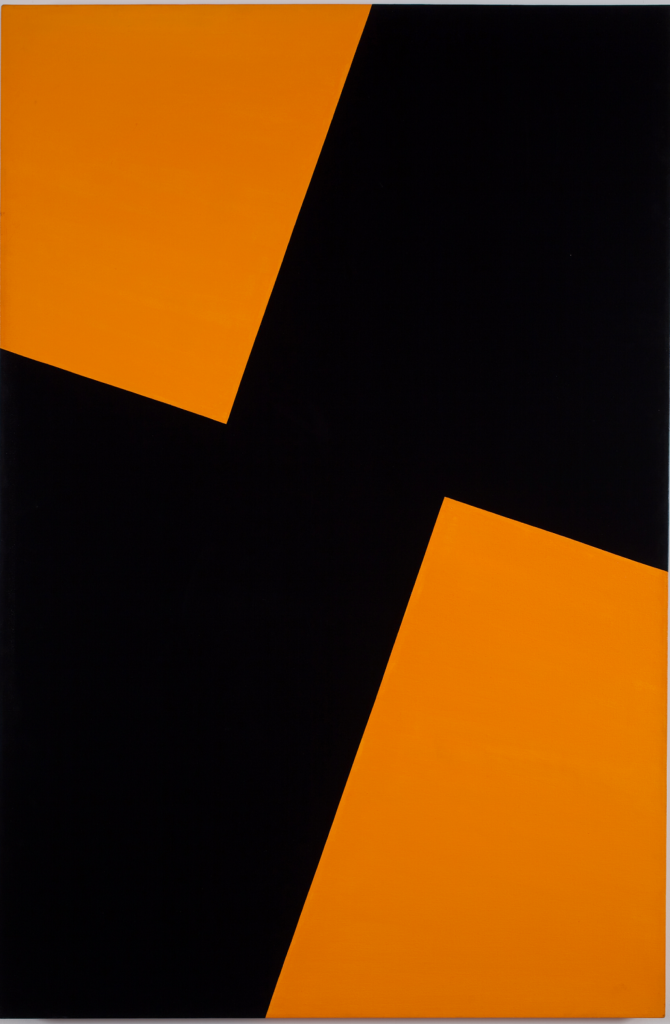On View
Carmen Herrera’s Long-Overdue Retrospective at the Whitney Museum Is a Must-See
It is her first New York City museum exhibition in nearly two decades.

It is her first New York City museum exhibition in nearly two decades.

Carmen Herrera’s story is impossible not to love.
The Cuban-American painter, who turned 101 this past May, worked in obscurity for decades despite her early, groundbreaking exploration of abstraction. After garnering recognition in a group show about a dozen years ago, momentum for her work started to build.
This led to six-figure auction prices and better representation at art fairs, a documentary, and a sold-out show at the Lisson Gallery, culminating in the Whitney Museum of American Art retrospective that opens to the public on September 16. It is her first New York City museum exhibition in nearly two decades. The beautifully-installed show, titled “Carmen Herrera: Lines of Sight,” on the eighth floor of the museum, consists of about 50 works, including, drawings, sculpture and paintings that trace the arc of her career from the years between 1948 to 1978. It was then that she honed her signature style of abstraction, with the works becoming ever-more minimal along the way.
“With material this strong, the curatorial imperative is really to step back and let the work shine,” said Dana Miller, the Whitney curator who spearheaded the show, speaking at a press conference Wednesday morning.
The origins of the show are rooted in the Whitney’s downtown move in 2014, when Miller began researching gaps in the museum’s collection. Having already realized that Herrera was a priority, she said she began trying to see as many works as possible. “What became clear to me is that I did not want to acquire a Carmen Herrera painting for the Whitney. I wanted to acquire 15.”
Miller says although Herrera’s maxim is “less is more,” when creating her work, she says she firmly believes “more is more” when seeing it up close.
“In viewing more than 100 works as preparation for this exhibition, and in spending hours with Herrera in her studio, it has become quite clear to me that she is an artist of extraordinary courage, integrity, and vision,” says Miller. “In many ways she is a woman ahead of her time—she was—she still is.”
Herrera was educated in Havana and in Paris, where she studied art, art history and architecture. Experts often cite the influence of architecture studies in her geometric-shaped canvases and expertly executed angles. In 1939, she married an American teacher named Jessie Lowenthal and moved to New York, where she attended classes at the Art Students League. Between 1948 and 1953, the couple lived in Paris, where she befriended many other artists, and returned to the US in the mid-50s.
The show is comprised of three sections organized in roughly chronological sequence. The first focuses on 1948–58, considered a formative period in which the artist was experimenting with different types of abstraction, including more than a dozen paintings made while she lived in Paris. Many of the works have never been shown in a museum before.
The second section includes paintings from “Blanco y Verde,” the series that Herrera herself regards as most important in her career. The nine paintings in this section span from 1959–71 and reflect the way in which the artist “conceptualized her paintings as objects, using the physical structure of the canvas as a compositional tool and integrating the surrounding environment,” according to a statement from the Whitney.
The final section includes work from the ’60s and ’70s, illustrating the artist’s continued experimentation and ongoing refinement of her technique and visual language. It includes sculptural works that Herrera calls “Estructuras,” and vivid paintings from her “Days of the Week” series (1975–78).

Carmen Herrera, Friday, 1978. Courtesy the artist and Lisson Gallery © Carmen Herrera.
Miller pointed out Herrera’s startling innovations are evident even in the early stages of her career. “She was doing all of this in the early 1950s, this is at the same time, or before other artists who have previously been heralded for such developments.” Despite this, he says, “she couldn’t find gallery representation and was all but ignored by museums, in part, because of discrimination against her as both a woman and as an immigrant.”
Whitney director Adam Weinberg touched on this when he noted how the artist herself once said that as a Latina painter, she stood no chance. “I’m happy to see that she finally did get her chance.”